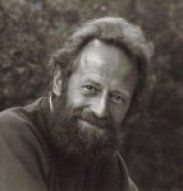John Exton
John Exton was born on 28 March 1933 in Wolverton (England). he started to play the violin at the age of 11. In 1950 he became leader of the National Youth Orchestra of Great Britain. He started to read music at the King's College in Cambridge. In 1956 he won the Mendelssohn Scholarship and studied with Luigi Dallapiccola in Florence for a year. After that he continued his studies in Cambridge with Robin Orr and Matyas Seiber. John Exton became Doctor in Music in 1963 and in the same year the director of music at Bedales School. In 1966 John Exton followed an appointment as a senior lecturer at the University of Western Australia in Perth. He taught composition there until his retirement.
John Exton died on 13 September 2009 in Perth (Australia).
Among the compositions of John Exton are orchestral works like the "Movements for orchestra" and "Ryoanji for 40 strings and percussion" or vocal compositions like "The story of Christ's nativity according to St. Luke, for narrators, singers and instruments". But an emphasis lies on the chamber music with 7 string quartets, trios and sonatas for different instrumentations as well as many works for solo instruments. He also composed a few electro-acoustic works.
In my possession is the autograph manuscript of the "Fantasy for violin and piano" from 1962. The work is dedicated to violinist Sydney Humphreys and pianist Philip Ledger, but I could not find a note if they premiered the work. The earliest verifiable performance was on 10.05.1963 with Yfrah Neaman (violin) and Randolph Hokanson (piano) at the University of Washington. Later the work was also recorded for CD by Rotraud Schneider (violin) and Daniel Herscovitch (piano) for the Canberra School of Music record label.
John Exton included the following handwritten note on the Fantasy to the autograph manuscript:
The Fantasy was written during the summer of 1962, and was conceived primarily as a violin solo. The piano part is neither an accompaniment nor an equal complementary voice, but rather an extension and elaboration of the violin part which dominates throughout.
It opens with a slow, unaccompanied Cantilena for the violin, unfolding the thematic paragraph on which the whole piece is based as a sort of free and extended Passacaglia. Against successive developments and variations of this theme, the piano enters with short interjections which gradually coalesce into a fast, central scherzando section. This culminates in a joint cadenza for the two instruments, and the piece ends quietly with a return of the original mood, now with more reflective interjections from the piano.
